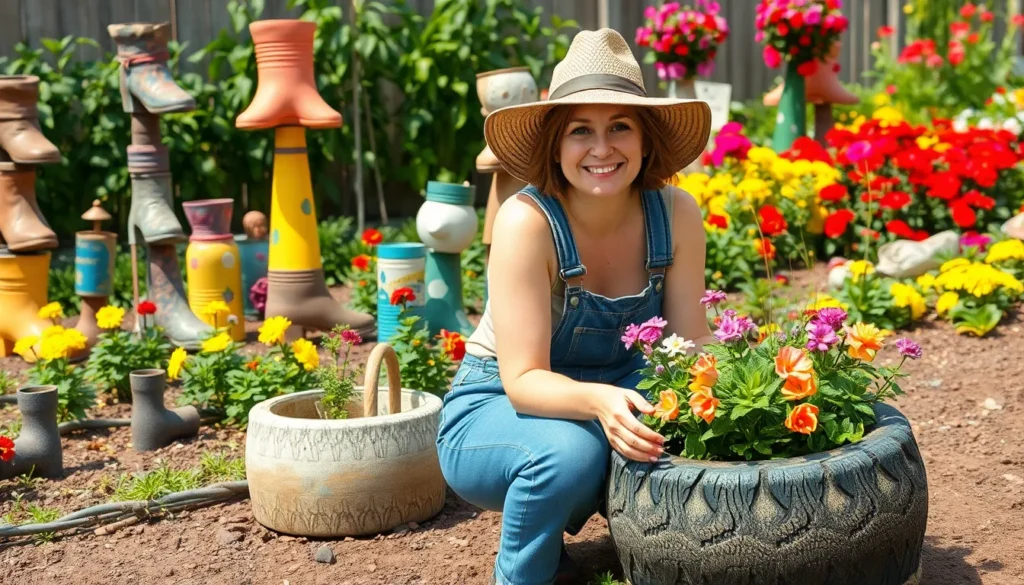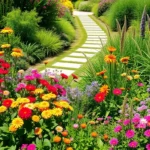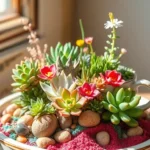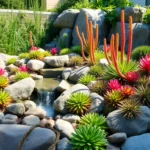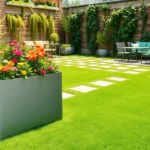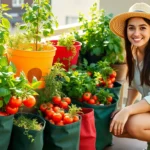We’ve all gazed at that pile of “junk” in our garage or basement and wondered what to do with it. Those broken tools, old tires, discarded furniture pieces, and forgotten household items aren’t just clutter – they’re treasure waiting to be transformed into stunning garden art that’ll make your neighbors green with envy.
Creating beautiful garden decor from recycled materials isn’t just environmentally friendly; it’s incredibly rewarding and budget-conscious too. We’re about to show you how everyday throwaways can become conversation-starting centerpieces that add personality and charm to your outdoor space.
From rusty watering cans turned into whimsical planters to worn-out boots transformed into quirky flower displays, upcycling junk into garden art combines creativity with sustainability. You’ll discover that the most captivating garden features often come from the most unexpected sources – and the best part? You probably already have everything you need sitting in your storage areas right now.
Transform Old Tires Into Stunning Garden Planters
Old tires become some of our most versatile garden art materials when we reimagine their purpose. These rubber rings offer durability and weather resistance that make them perfect containers for creating eye-catching displays throughout our outdoor spaces.
Painted Tire Planters With Vibrant Colors
Painted tire planters transform discarded rubber into colorful focal points that brighten any garden corner. We recommend using exterior latex paint or specialized rubber paint to ensure colors stay vibrant through all weather conditions. Bold colors like turquoise, sunny yellow, and coral create stunning contrast against green foliage.
Preparation involves cleaning tires thoroughly with degreasing soap and allowing them to dry completely. Primer application helps paint adhere better and prevents peeling over time. We’ve found that spray painting works best for even coverage, though brush painting allows for more detailed designs.
Multiple color combinations create visual interest throughout garden spaces. Two-tone effects using complementary colors like purple and yellow make striking statements. Geometric patterns or simple stripes add artistic flair without requiring advanced painting skills.
Stacked Tire Garden Towers For Vertical Growing
Stacked tire garden towers maximize growing space while creating impressive vertical displays in compact areas. These towers work exceptionally well for growing strawberries, herbs, and trailing flowers that cascade beautifully over tire edges. We typically stack three to four tires for optimal stability and visual impact.
Construction begins with placing the largest tire as a base, filling it halfway with quality potting soil. Each subsequent tire gets positioned slightly offset from the one below, creating planting pockets around the edges. This staggered arrangement allows plants to receive adequate sunlight and creates natural drainage pathways.
Drainage considerations prevent water logging and root rot in stacked arrangements. We drill several holes in the bottom tire and add gravel layers between each level. Strategic plant placement puts trailing varieties at the top and more upright plants in lower sections.
Tire Swing Planters Hanging From Trees
Tire swing planters combine childhood nostalgia with functional garden design by repurposing both the tire and swing concept. Strong tree branches support these hanging gardens perfectly, creating unique overhead displays that draw the eye upward. We secure them using marine-grade rope or heavy-duty chains rated for outdoor use.
Installation requires selecting branches at least 6 inches in diameter to support the weight of soil and plants. Three equally spaced attachment points distribute weight evenly and prevent spinning in wind. Height placement should allow easy access for watering and maintenance while creating visual impact.
Plant selection focuses on trailing and cascading varieties that create dramatic flowing effects. Petunias, bacopa, and ivy geraniums work wonderfully in these suspended displays. Succulents like string of pearls create stunning waterfall effects that complement the circular tire shape perfectly.
Create Eye-Catching Garden Sculptures From Scrap Metal
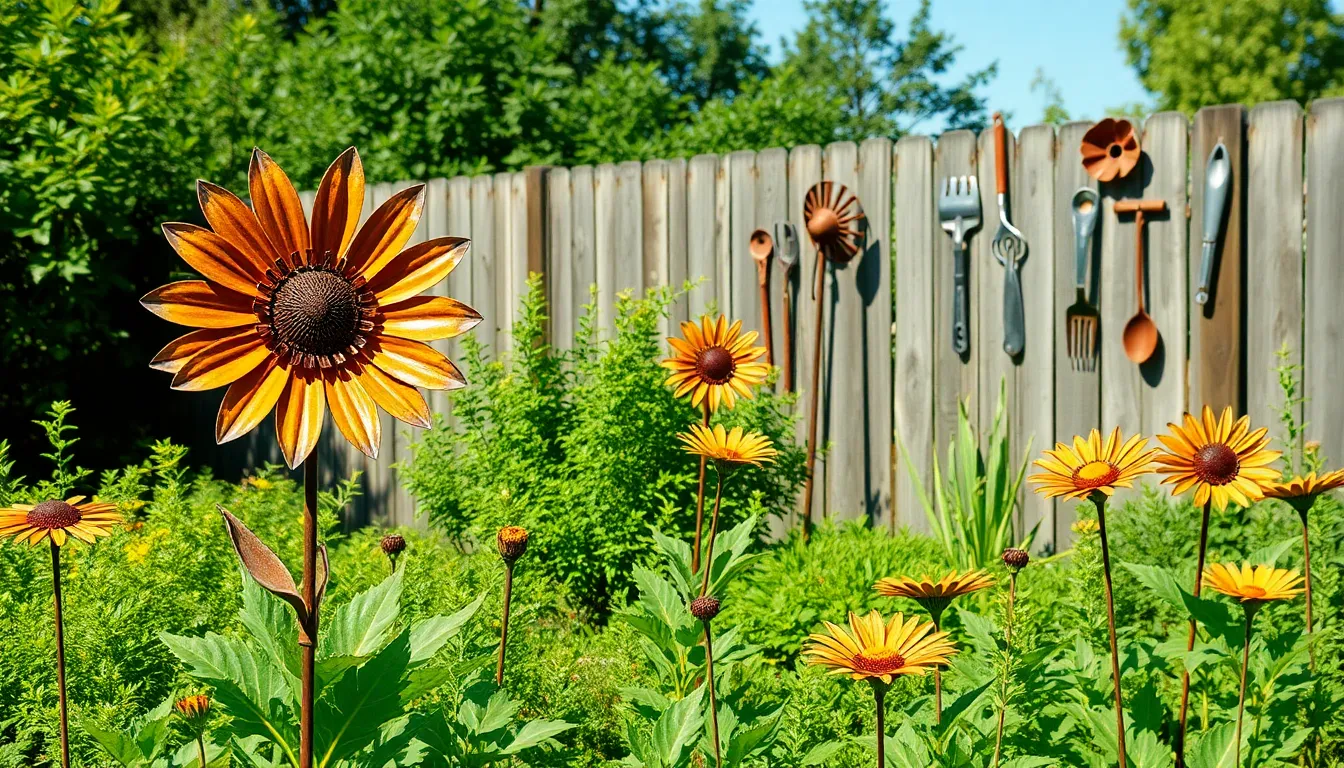
Metal scraps from construction projects, old appliances, and discarded machinery offer endless possibilities for creating stunning garden art. We’ll transform these overlooked materials into sophisticated sculptures that rival expensive store-bought pieces.
Welded Metal Flower Sculptures
Welded metal flower sculptures bring a modern industrial aesthetic to our outdoor spaces. We can create detailed blooms using thin steel sheets, rebar, and pipe sections to create realistic petals and stems. Artists often combine different metal thicknesses to achieve varying textures, with heavier gauge steel forming the base structure and lighter materials creating delicate flower details.
Size variations make these sculptures versatile garden additions. Large installations serve as dramatic focal points near patios or garden entrances, while smaller pieces work beautifully clustered along pathways. We recommend starting with simple designs like sunflowers or daisies before attempting complex roses or lilies.
Color finishing options include natural rust patina, powder coating, or high-temperature paint applications. Natural weathering creates authentic aged appearances that complement rustic garden themes, while painted finishes offer precise color control for contemporary landscapes.
Rusted Garden Stakes And Wind Catchers
Rusted garden stakes transform ordinary metal scraps into charming plant markers and decorative elements. We’ll use old rebar, metal rods, and discarded hardware to create functional art pieces that develop beautiful rust patinas over time. These stakes work perfectly for marking plant rows, supporting climbing vines, or simply adding vertical interest throughout garden beds.
Wind catchers harness natural breezes to create movement and sound in our gardens. Flat metal pieces, old saw blades, and sheet metal scraps become kinetic sculptures when properly balanced and mounted. We shape these materials into spirals, geometric patterns, or abstract forms that spin gracefully in even gentle winds.
Industrial materials like chain link, wire mesh, and perforated metal create sophisticated wind catcher designs. These elements catch air currents effectively while casting interesting shadow patterns on surrounding plants and pathways.
Repurposed Tool Garden Art Displays
Repurposed tool garden art displays celebrate the history of manual labor while creating unique decorative elements. We’ll mount old hammers, sickles, and trowels on wooden backings or metal frameworks to create compelling wall art for garden sheds, fences, or outdoor structures. These displays work particularly well in vegetable gardens where they honor traditional farming tools.
Hanging installations using chains or cables showcase collections of vintage hand tools effectively. We arrange items by size, type, or era to create visually balanced compositions that tell stories about gardening heritage. Weathered handles and rusted metal surfaces add authentic character that new reproductions can’t match.
Functional integration combines art with utility by repurposing tools as planters, water features, or lighting fixtures. Old watering cans become hanging planters, while large shovels serve as unique garden markers or small plant stands throughout our outdoor spaces.
Turn Broken Pottery Into Mosaic Garden Masterpieces
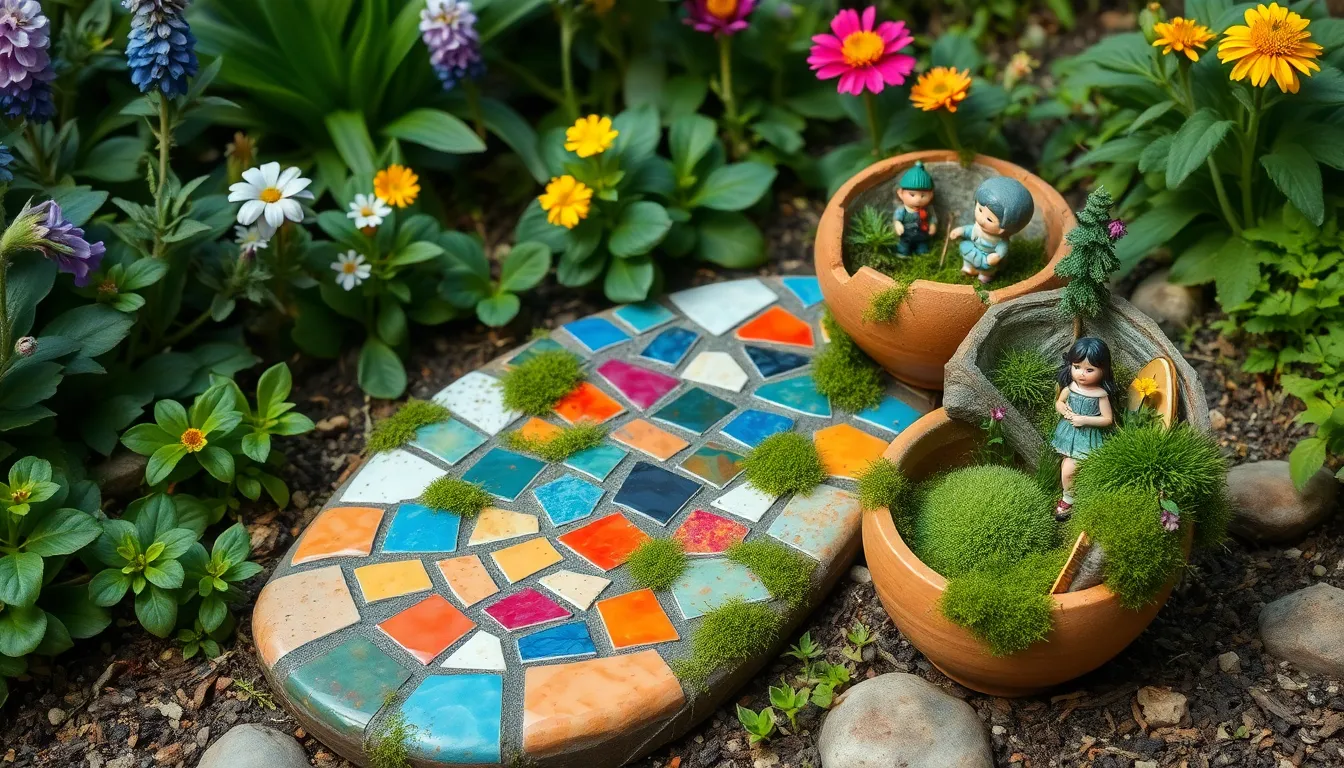
Shattered ceramics and cracked dishes don’t belong in the trash when they can become stunning garden art pieces. We’ll show you how to transform these broken treasures into beautiful mosaics that rival expensive garden decorations.
Cracked Pot Fairy Gardens
Create whimsical miniature worlds by filling cracked pots with small plants, moss, and decorative stones. Position the crack to serve as a natural entrance for your fairy garden inhabitants. Layer different textures using succulents, baby ferns, and colorful moss to build depth in your tiny industry.
Add personality with small figurines or repurpose household items like thimbles and bottle caps as fairy furniture. Place these enchanting displays near walkways or patios where visitors can admire the intricate details. Multiple fairy gardens create a magical collection that tells a story throughout your outdoor space.
Mosaic Stepping Stones From Dish Fragments
Sort broken dishes by color to create cohesive patterns before starting your mosaic stepping stones. Apply thin-set mortar as your adhesive base, then arrange ceramic fragments leaving adequate space for grouting between pieces. Bold color combinations make striking pathways, while monochromatic schemes offer subtle elegance.
Secure fragments with strong adhesive and allow proper curing time before grouting. Create geometric patterns, floral designs, or abstract compositions depending on your garden’s style. Weather-resistant grout ensures your stepping stones withstand outdoor conditions for years.
Broken Ceramic Tile Garden Borders
Arrange ceramic tile pieces in repeating patterns along garden beds to define planting areas with artistic flair. Mix different tile sizes and colors to create visual interest while maintaining design cohesion. Geometric layouts work especially well for modern gardens, while organic curves complement cottage-style landscapes.
Secure tiles with mortar and apply grout to fill gaps, creating professional-looking borders that add texture and color to garden paths. These decorative borders help separate different garden zones while showcasing your creativity with repurposed materials.
Build Unique Water Features Using Discarded Materials
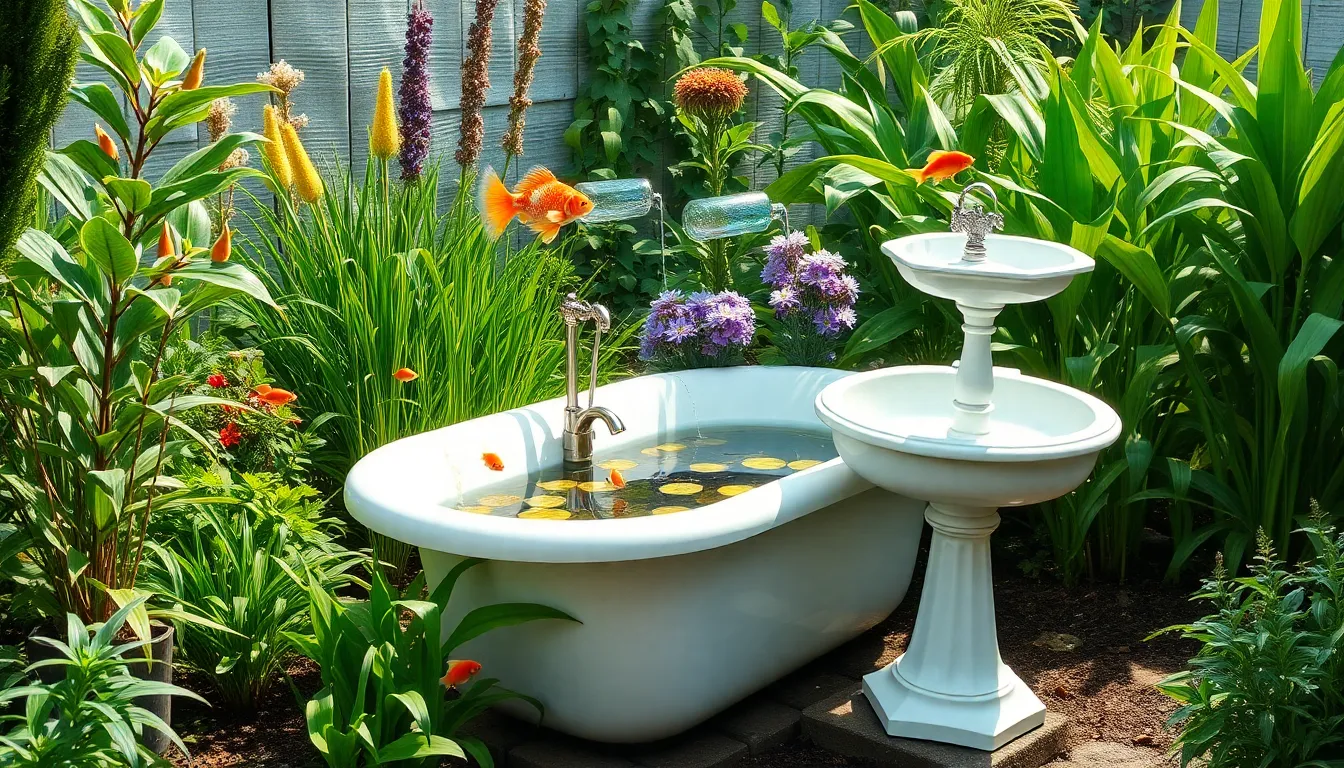
Water transforms any garden space into a tranquil retreat, and we can achieve this transformation using materials destined for the landfill. Discarded containers, old fixtures, and household items become focal points when repurposed into cascading fountains and bubbling streams.
Old Bathtub Garden Ponds
Old bathtubs create instant garden ponds that serve as stunning centerpieces in our outdoor spaces. We recommend burying the tub partially underground for a natural appearance, leaving about 6 inches above ground level. Cast iron and fiberglass tubs work exceptionally well because they’re already waterproof and durable against weather conditions.
Position your bathtub pond near existing landscaping to integrate it seamlessly into the garden design. Add aquatic plants like water lilies, cattails, and floating lotus to create a living network. Small goldfish or koi transform these repurposed fixtures into thriving water gardens that support local wildlife.
Drainage becomes essential for winter maintenance, so we suggest installing a simple drain plug system. This allows us to empty the pond during freezing temperatures and refill it when spring arrives.
Repurposed Sink Bird Baths
Kitchen and bathroom sinks make perfect bird baths when mounted on pedestals or brick stacks. Porcelain sinks resist weather damage while providing the shallow water depth that birds prefer for bathing and drinking.
Create height variations by stacking different sized sinks or mounting them at various levels throughout the garden. We’ve found that positioning bird baths 2 to 3 feet above ground keeps them safe from ground predators while remaining accessible to flying visitors.
Add textured stones or small branches inside the basin to give birds secure perching spots. Place these repurposed fixtures near shrubs or trees to provide quick escape routes for nervous birds.
Clean the sink weekly and refill with fresh water to maintain a healthy environment for our feathered friends.
Plastic Bottle Drip Irrigation Art
Plastic bottles become both functional irrigation systems and decorative garden art through creative cutting and painting techniques. We pierce small holes near the bottle caps and bury them next to plant roots for efficient water delivery.
Paint bottles with weather resistant acrylic paints in bright colors that complement existing garden themes. Geometric patterns, floral designs, and abstract shapes turn these utilitarian items into eye catching displays.
Hanging bottle planters work well when we cut large openings in the sides and thread them with colorful rope or chain. These elevated gardens add vertical interest while providing continuous water access to plants below.
Large 2 liter bottles hold enough water for 3 to 5 days of slow irrigation, making them perfect for weekend getaways or busy schedules.
Design Whimsical Garden Creatures From Household Junk
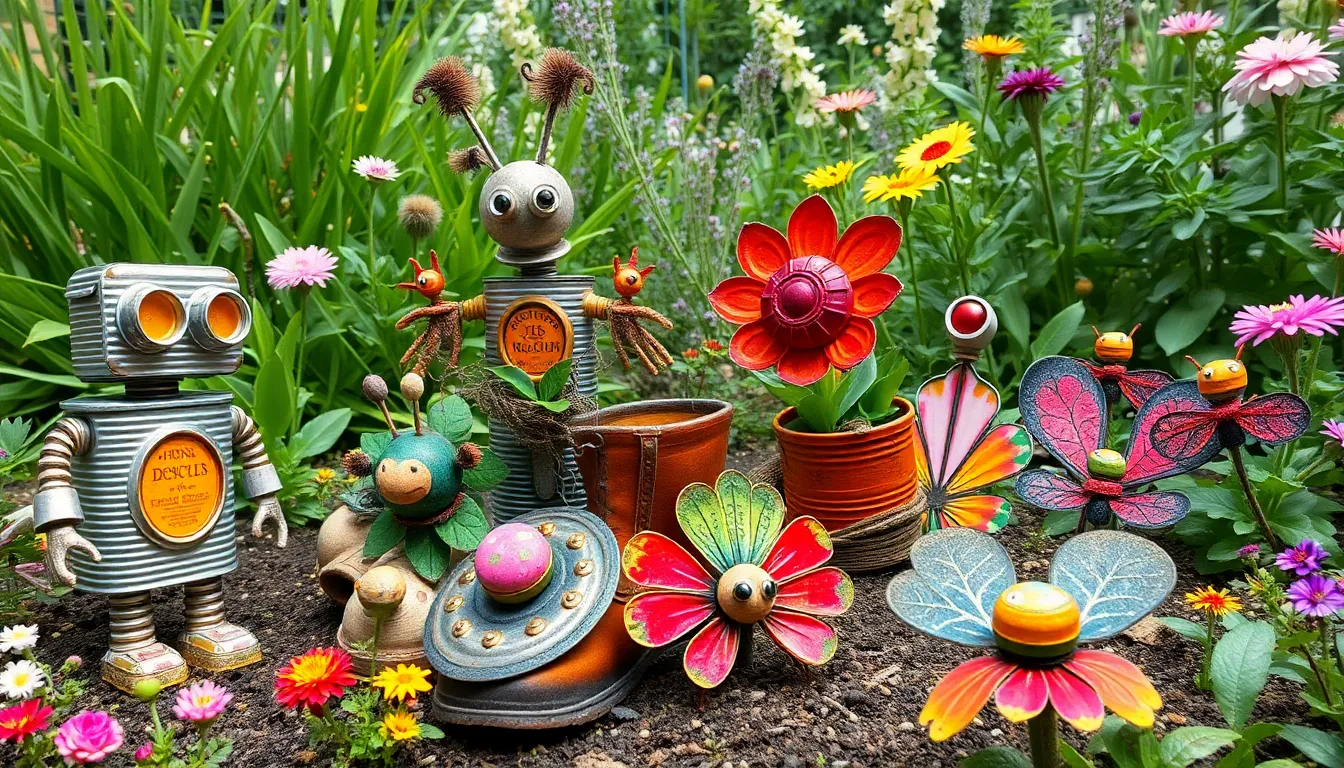
We’ll transform everyday household discards into charming garden creatures that bring personality and joy to our outdoor spaces. These playful projects combine creativity with sustainability to create unique focal points.
Tin Can Robot Garden Guards
Painting transforms ordinary tin cans into delightful robot garden guardians that protect our plants with mechanical charm. We remove labels completely and clean each can thoroughly before applying primer for better paint adhesion. Base coats in metallic silver or bright colors create the perfect robot foundation.
Eyes become the most expressive feature when we use bottle caps, buttons, or painted circles to give each robot distinct personalities. Arms extend from the main body using smaller cans or aluminum tubes attached with strong adhesive. Details like antennas made from wire coat hangers and control panels drawn with permanent markers complete the robotic transformation.
Assembly requires stacking cans of varying sizes to create head, torso, and leg segments that form stable structures. We drill small drainage holes in bottom cans when using them as planters for herbs or small flowers. Weather resistant paint ensures our robot guards maintain their appearance through all seasons.
Old Boot Planter Animals
Worn boots gain new life as whimsical animal planters that add humor and functionality to garden spaces. We select boots with good structural integrity and drill drainage holes in the soles to prevent water accumulation. Cleaning removes dirt and debris while preparing surfaces for decoration.
Rabbit transformations start with painting boots in soft pastels like white, cream, or light brown to mimic natural fur colors. Fabric ears attached to the boot tops create authentic rabbit silhouettes. Button noses and painted whiskers complete the adorable rabbit appearance.
Elephant designs use larger boots painted in gray tones with trunk attachments made from flexible dryer hoses or pool noodles. We add fabric ears cut from old sheets and paint eyes near the boot opening. Small plants like succulents or trailing ivy work perfectly in these elephant planters.
Animal details bring each creation to life through strategic placement of features like painted spots for giraffes or stripes for zebras. We use outdoor fabric paint that withstands moisture and UV exposure for lasting beauty.
Bottle Cap Garden Insects
Colorful bottle caps transform into stunning garden insects through creative arrangement and artistic vision. We collect caps in various colors and sizes, focusing on metal caps that resist weather damage better than plastic alternatives. Cleaning removes adhesive residue and prepares surfaces for painting or assembly.
Butterfly mosaics require four caps arranged in wing patterns with larger caps forming upper wings and smaller caps creating lower wing sections. We paint intricate patterns using outdoor acrylic paints in bright colors like orange, yellow, and red. Wire or small metal rods create antennae extending from the center body section.
Bee designs use alternating yellow and black painted caps arranged in oval body shapes with clear or white caps forming translucent wings. We attach wings slightly overlapping the body sections for realistic proportions. Small beads or painted dots create eyes on the head cap.
Ladybug creations start with red painted caps for body segments decorated with black dots in traditional ladybug patterns. Black painted caps form the head section with white dots representing eyes. We arrange multiple ladybugs along garden borders or fence lines for maximum visual impact.
Installation involves mounting caps on stakes or attaching them to existing garden structures using weatherproof adhesive or small screws. Groups of different insects create diverse ecosystems that enhance garden biodiversity themes.
Construct Functional Garden Art From Wooden Scraps
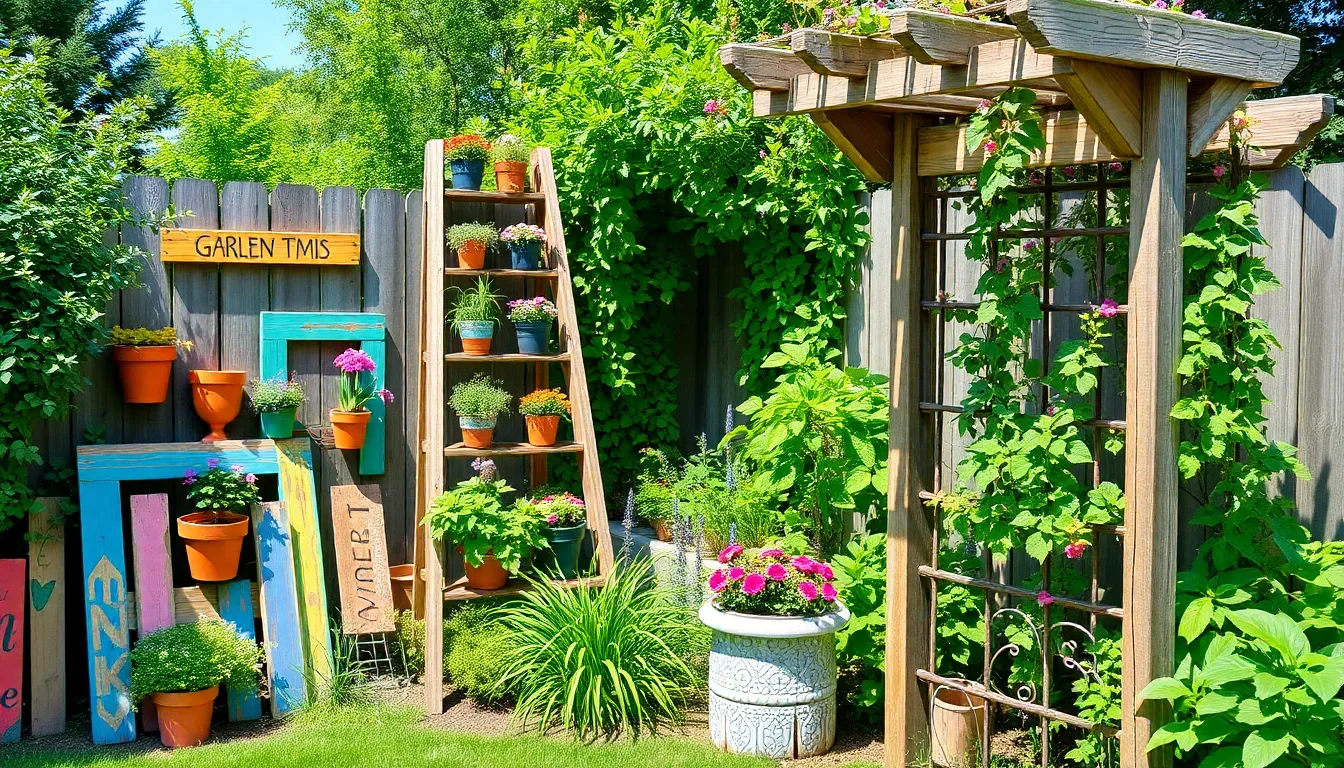
Wooden scraps represent one of the most versatile materials for creating functional garden art that combines practicality with aesthetic appeal. We can transform discarded lumber into beautiful pieces that serve multiple purposes in our outdoor spaces.
Pallet Wood Garden Signs And Markers
Pallet wood transforms into rustic garden signs and markers that add personality to our outdoor spaces while serving practical purposes. We disassemble old shipping pallets to access weathered wood boards that already possess the desired vintage appearance.
Creating these markers involves simple techniques that require minimal investment. We cut pallet boards into various shapes like rectangles for plant labels or arrow shapes for directional signs. Paint serves as our primary decorating medium, allowing us to create colorful backgrounds or stenciled text. Sharpie markers offer precise lettering for plant names and garden zones. Transfer sheets provide professional looking graphics and decorative elements.
Assembly becomes straightforward when we pre drill holes to prevent wood splitting. We attach smaller pieces together using wood screws to create larger display boards. Stakes made from pointed pallet slats allow our signs to stand upright in garden beds.
Old Ladder Plant Display Stands
Old wooden ladders become stunning vertical plant displays that maximize growing space while creating eye catching focal points in our gardens. We source weathered step ladders from garage sales, estate sales, or our own storage areas.
Preparation involves thorough cleaning to remove dirt and loose paint flakes. We sand rough surfaces lightly to prevent splinters while preserving the natural patina. Each rung serves as a shelf for displaying potted plants at different heights.
Stability requires anchoring the ladder base in soil or placing it against a fence or wall. We arrange plants strategically, placing heavier pots on lower rungs and trailing varieties near the top. Seasonal rotation allows us to change displays throughout the growing season.
Weather protection extends the ladder’s lifespan significantly. We apply clear wood sealer to prevent moisture damage while maintaining the rustic appearance.
Weathered Wood Garden Trellises
Weathered wood planks create beautiful trellises that support climbing plants while adding architectural interest to our gardens. We collect wood from old fencing, decking, or building materials that display natural aging and character.
Construction begins with measuring our growing space to determine trellis dimensions. We cut planks into vertical supports and horizontal cross pieces using basic hand tools. Grid patterns work well for most climbing plants, while diamond patterns create more decorative appearances.
Assembly methods include traditional joinery or simple screw connections. We drill pilot holes to prevent splitting in weathered wood. Twine lashing provides a rustic alternative that complements the natural materials.
Installation requires secure anchoring in the ground or attachment to existing structures. We dig post holes for freestanding trellises or mount brackets for wall attached versions. Weather resistant screws ensure long lasting connections.
Plant selection enhances the trellis functionality. We choose vigorous climbers like morning glories, clematis, or climbing roses that quickly cover the wooden framework. Annual vines provide seasonal color changes while perennial climbers create permanent garden features.
Fashion Creative Garden Lighting From Recycled Items
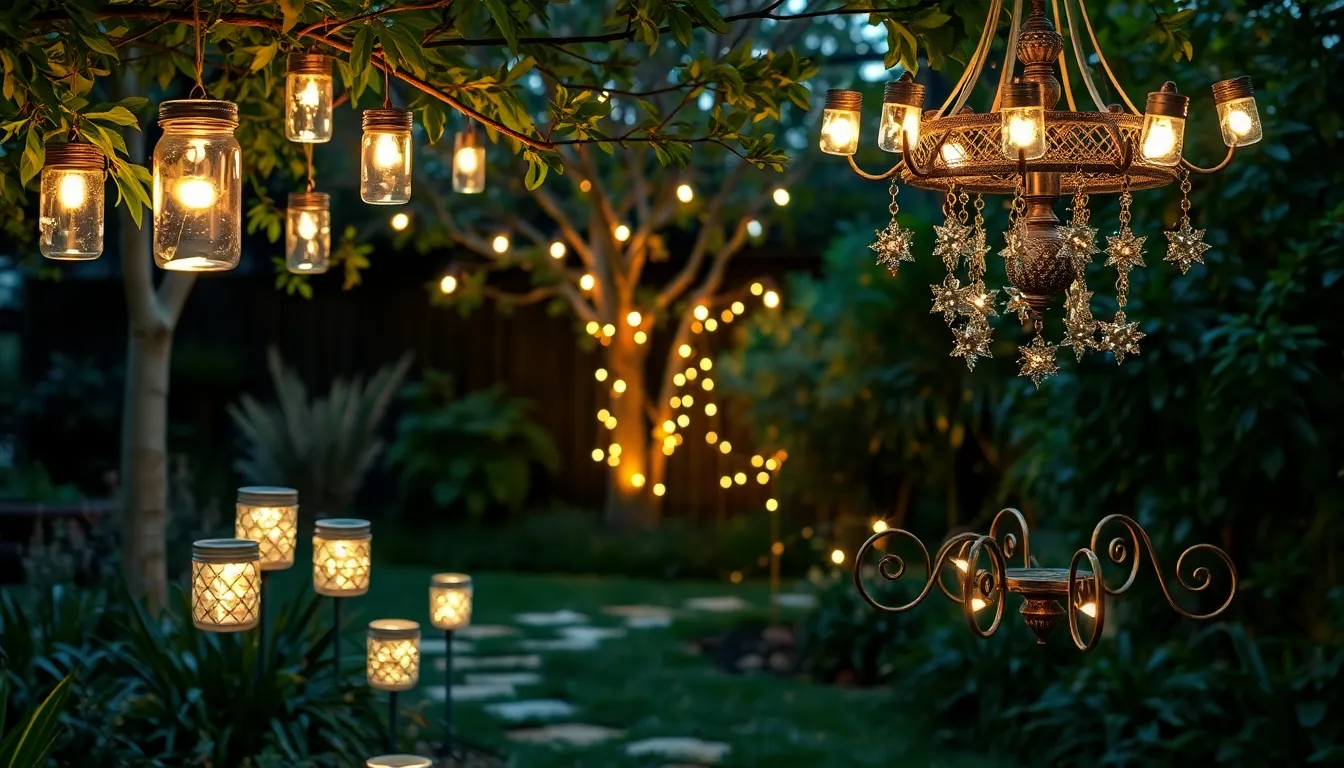
Transforming discarded materials into stunning garden lighting creates magical evening ambiance while reducing waste. We’ll explore three captivating lighting answers that turn everyday junk into enchanting outdoor illumination.
Mason Jar Solar Light Displays
Mason jar solar lights offer the perfect blend of rustic charm and sustainable energy. We can create mesmerizing displays by filling clean mason jars with water, adding a handful of glitter or decorative stones, and inserting solar light lids available at most hardware stores.
These versatile fixtures work beautifully when hung from tree branches using twine or wire, creating a fairy tale atmosphere that dances with the evening breeze. Fence posts also provide excellent mounting points for multiple jars arranged at varying heights to produce layered lighting effects.
Color variations become possible by adding food coloring to the water or using colored glass jars, while different glitter types create unique sparkling patterns. Multiple jar clusters placed throughout garden pathways guide visitors safely while adding visual interest to industry borders.
Tin Can Luminaries For Pathways
Tin can luminaries transform ordinary food containers into sophisticated pathway lighting that rivals expensive store bought alternatives. We start by thoroughly cleaning cans and removing labels, then create decorative hole patterns using a hammer and various sized nails while the can sits on a towel filled surface.
Paint options include metallic sprays for elegant finishes or chalkboard paint for customizable seasonal messages. LED tea lights provide safe, long lasting illumination that won’t create fire hazards, while battery operated string lights can be coiled inside larger cans for more dramatic effects.
Strategic placement along garden walkways creates a warm, welcoming glow that highlights industry features and ensures safe navigation. Varying can sizes and hole patterns produces diverse lighting effects, from subtle accent pieces to bold statement luminaries that define outdoor living spaces.
Old Chandelier Garden Hanging Lights
Discarded chandeliers become stunning garden centerpieces that add unexpected elegance to outdoor entertaining areas. We can repurpose these fixtures by removing electrical components and replacing them with solar lights attached to each arm, creating spectacular hanging displays that charge during the day and illuminate evenings automatically.
Tree branches provide natural mounting points for chandelier installations, while pergolas and gazebos offer more formal hanging opportunities. Candle holders can replace light sockets for those preferring flickering flame effects, though we recommend battery operated candles for safety considerations.
Weatherproofing treatments help protect metal and crystal elements from outdoor conditions, extending the lifespan of these decorative pieces. Multiple smaller chandeliers arranged at different heights create layered lighting schemes that transform ordinary patios into magical outdoor rooms perfect for evening gatherings.
Repurpose Kitchen Items Into Garden Art Treasures
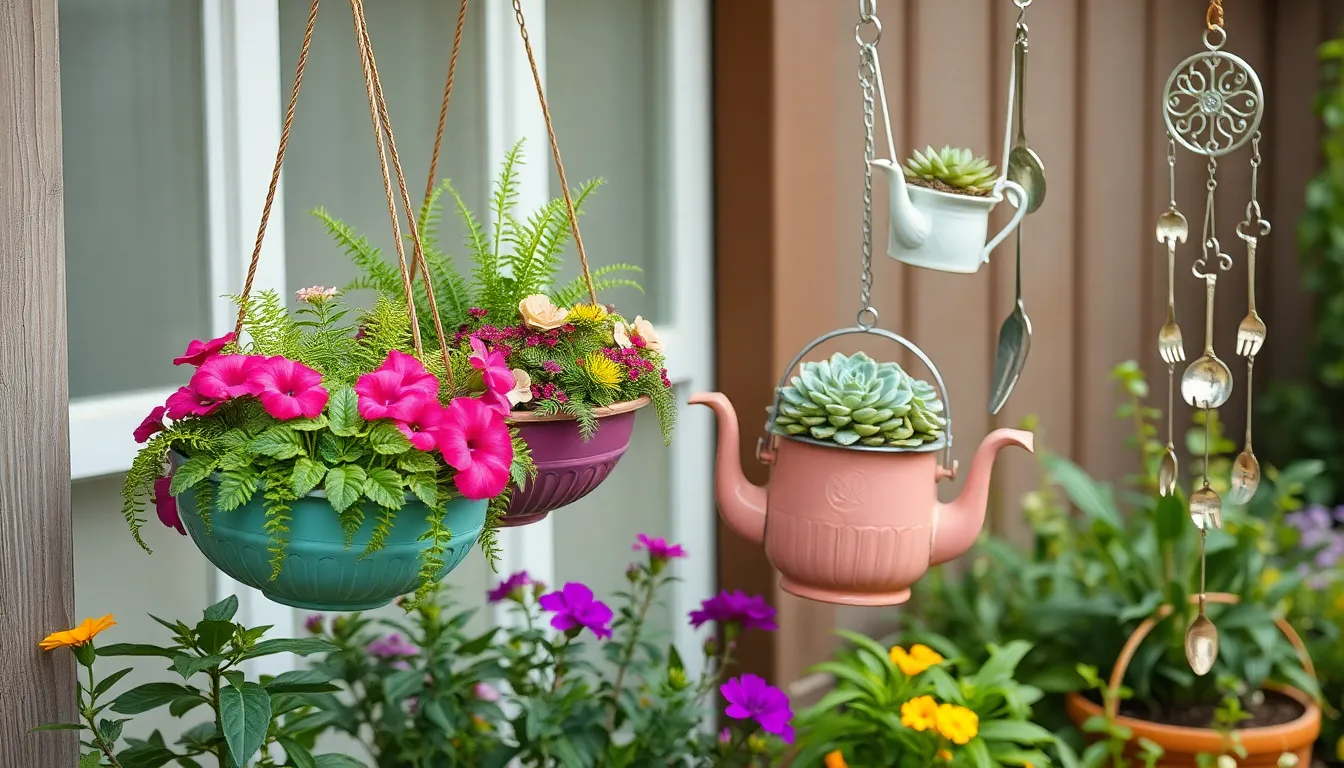
Our kitchens hold surprising potential for garden transformation projects. Worn out cooking utensils and damaged dishes can become stunning outdoor focal points with minimal effort.
Colander Hanging Planters
Colanders transform into perfect drainage planters for ferns, petunias, and trailing ivy. We simply attach twine or wire to the handles and hang them from tree branches or shepherd’s hooks. The built in holes provide excellent water drainage while creating interesting shadow patterns on plants below.
Benefits include easy mobility around garden spaces and instant rustic charm. These planters work exceptionally well for herbs like parsley and cilantro since we can harvest while they hang at eye level. Stainless steel colanders develop beautiful patina over time while plastic versions offer lightweight versatility.
Teapot Succulent Gardens
Teapots create enchanting miniature landscapes filled with jade plants, echeveria, and string of pearls. We fill the pot with well draining succulent soil and arrange small plants through the opening. The spout becomes a natural overflow drain while the handle adds visual interest.
Vintage ceramic teapots develop moss covered surfaces that enhance their cottage garden appeal. We position these charming containers on garden tables, stone walls, or wooden benches where morning sun reaches them. Cracked teapots work perfectly since succulents prefer slightly dry conditions and the cracks provide additional drainage.
Old Silverware Wind Chimes
Silverware creates melodic garden music when suspended from metal rings or driftwood pieces. We attach spoons, forks, and knives using thin wire at varying lengths to produce different tones. Stainless steel pieces produce clear bright sounds while vintage silver plated utensils create softer melodies.
These musical elements add auditory dimension to quiet garden corners and covered patios. We customize chimes by mixing different utensil types or adding small bells for enhanced sound variety. Tarnished silverware develops beautiful weathered finishes that complement natural garden materials like stone and wood.
Build Garden Borders And Edging From Found Materials
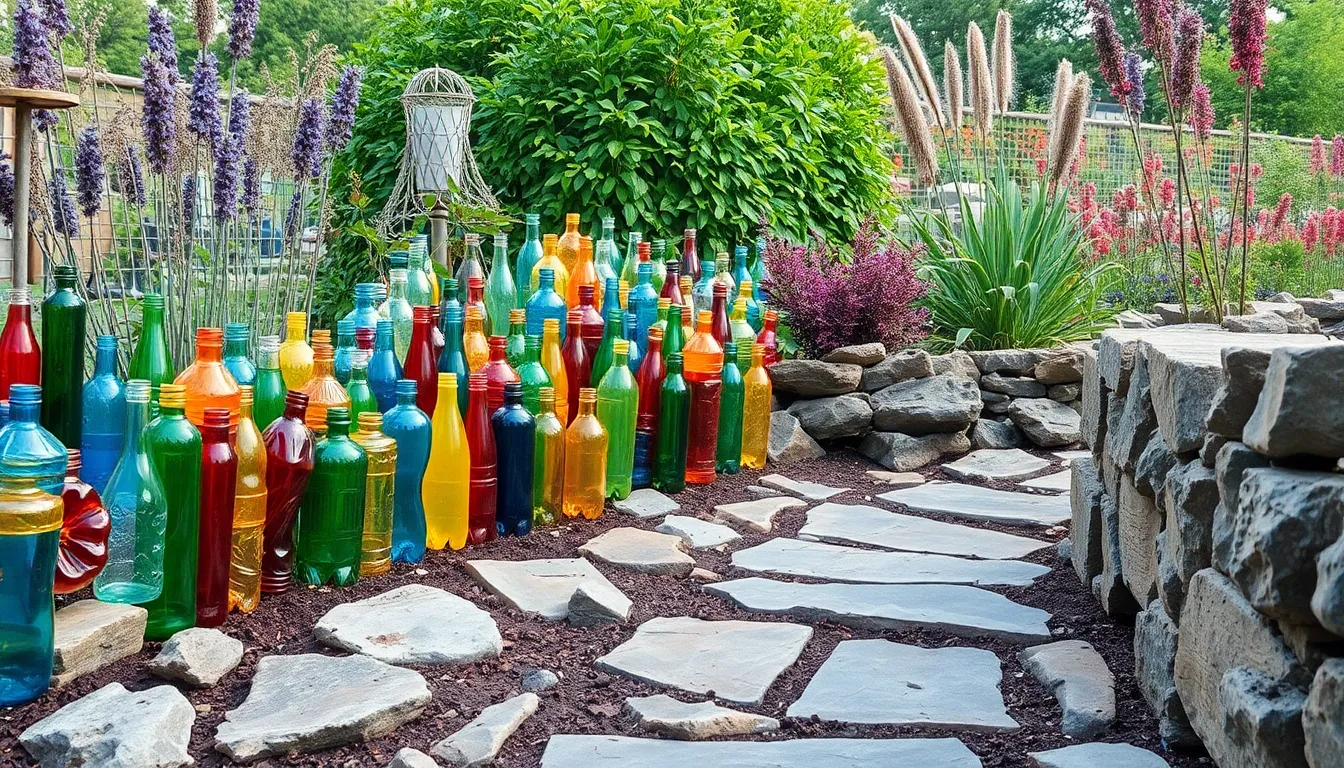
Creating beautiful garden borders doesn’t require expensive materials when we look at the potential hidden in everyday discarded items. Found materials offer sustainable answers that transform junk into functional industry features while reducing waste.
Bottle Border Garden Edging
Bottles create stunning garden borders that define flower beds and pathways with colorful charm. Glass and plastic bottles work equally well for this project, offering regular shapes that insert easily into the ground to form continuous lines. We position bottles neck-down in shallow trenches around garden beds, creating uniform barriers that prevent grass encroachment while adding visual appeal.
Different bottle colors produce varied aesthetic effects, from clear glass that catches sunlight to green wine bottles that complement plant foliage. Beer bottles in amber tones create warm borders, while colored plastic containers offer weatherproof durability. Each bottle type contributes unique characteristics to the overall design while serving the practical function of garden edging.
Installation techniques involve digging trenches approximately 4-6 inches deep and placing bottles shoulder-to-shoulder for complete coverage. We pack soil firmly around each bottle to ensure stability and create level tops for a professional appearance. This method transforms discarded containers into decorative borders that last for years with minimal maintenance.
Rock And Concrete Scrap Pathways
Rocks and broken concrete pieces transform waste materials into attractive garden pathways with rustic appeal. Construction sites and demolition projects often discard concrete chunks that we can repurpose into durable walking surfaces. These materials provide natural-looking pathways that complement outdoor landscapes while utilizing surplus building materials.
Irregular arrangement patterns create visually interesting mosaic effects using various sized stones and concrete fragments. We sort materials by size and color, then arrange larger pieces as stepping stones with smaller fragments filling gaps between them. This technique produces organic pathways that appear naturally formed rather than artificially constructed.
Preparation methods require leveling the pathway area and adding a sand base for stability. We embed larger concrete pieces first, then fill surrounding spaces with smaller rocks and debris. Proper drainage prevents water accumulation, while occasional weeding maintains the pathway’s appearance throughout growing seasons.
Reclaimed Brick Garden Dividers
Reclaimed bricks offer timeless appeal for garden dividers and low walls that separate different industry zones. Demolition projects and renovations frequently produce surplus bricks that we can collect for garden construction. Their uniform size and proven durability make them ideal materials for creating raised beds and defining garden boundaries.
Various arrangement patterns allow creative flexibility in brick placement, from traditional running bond to herringbone designs. We stack bricks without mortar for temporary dividers or use mortar for permanent installations that withstand weather and time. Each pattern creates different visual effects while serving the functional purpose of garden organization.
Construction techniques involve creating level foundations and checking alignment regularly during installation. We begin with corner bricks as reference points, then fill in between sections using string lines for straight edges. Proper spacing and level placement ensure professional-looking results that enhance garden aesthetics while providing practical plant separation.
Create Seasonal Garden Displays Using Salvaged Supplies
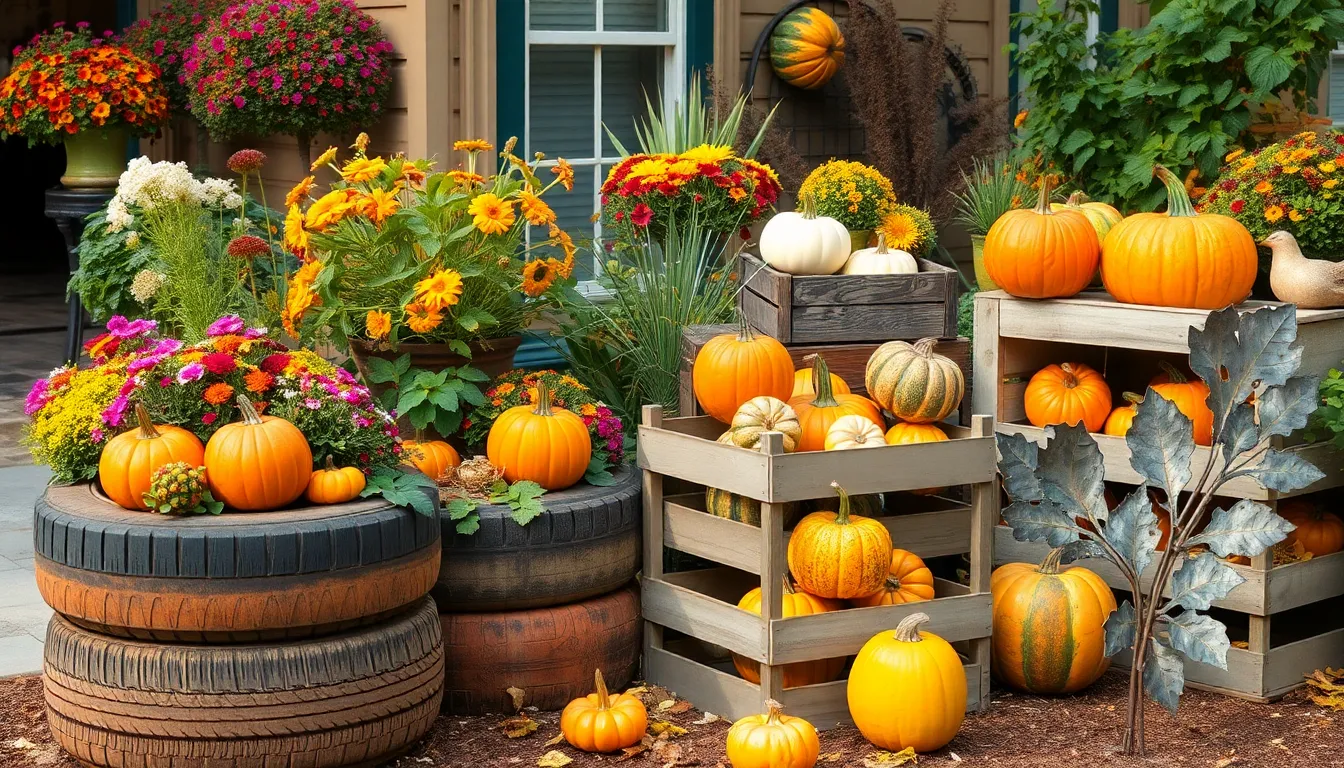
Transform our discarded materials into stunning seasonal showcases that celebrate nature’s changing rhythms. Each season offers unique opportunities to repurpose household junk into themed garden art that captures the essence of fall harvests, winter tranquility, and spring renewal.
Fall Harvest Junk Art Arrangements
Tire planters become autumn showstoppers when we fill them with vibrant fall flowers or decorative pumpkins. Paint these rubber containers in rich autumn colors like burnt orange, deep burgundy, or golden yellow to create eye-catching seasonal displays that celebrate harvest time.
Wooden crate displays offer rustic charm for showcasing our fall bounty including butternut squash, acorn squash, and ornamental gourds. Stack these salvaged containers at varying heights to create ever-changing arrangements that highlight the textures and colors of autumn’s harvest.
Metal sculptures crafted from construction scraps transform into artistic representations of fall themes. Weld together pieces of rebar, old fence posts, and discarded metal sheets to create abstract leaf shapes or oversized acorn sculptures that serve as striking focal points throughout the season.
Winter Garden Sculpture Installations
Recycled glass lanterns bring magical illumination to winter landscapes when we repurpose old wine bottles, mason jars, and discarded glass containers. Hang these luminous creations from bare tree branches or position them along snow covered pathways to create enchanting evening displays.
Snowman wind chimes produce delightful winter melodies using everyday items like old keys, bent spoons, and empty tin cans. String these materials together to create musical installations that catch winter breezes and add auditory interest to otherwise quiet garden spaces.
Old window displays become winter art galleries when we hang salvaged window frames on fences or exterior walls. Decorate these transparent canvases with artificial snowflakes, collected pinecones, and dried winter branches to create captivating seasonal vignettes.
Spring Flower Displays In Repurposed Containers
Plastic bottle planters offer perfect homes for early spring blooms like cheerful daffodils, colorful tulips, and delicate crocuses. Cut these containers to various heights and drill drainage holes to create an eclectic collection of small scale planters that celebrate spring’s arrival.
Pallet vertical gardens maximize growing space for spring flowers and fresh herbs like basil, parsley, and chives. Mount these wooden structures against walls or fences to create living art installations that provide both beauty and functionality during the growing season.
Bathtub planters serve as unique raised garden beds for spectacular spring blooms including azaleas, rhododendrons, and seasonal annuals. Position these substantial containers as centerpiece features that accommodate multiple plant varieties while adding vintage charm to our outdoor spaces.
Conclusion
We’ve shown you how ordinary junk can become extraordinary garden treasures that reflect your creativity and commitment to sustainability. Every broken pot discarded tool and worn-out household item holds potential for artistic transformation.
Your garden becomes a canvas where imagination meets environmental responsibility. These upcycled creations not only save money but also tell unique stories while reducing waste that would otherwise end up in landfills.
Start small by exploring what you already have at home. Whether it’s creating whimsical creatures from tin cans or elegant lighting from mason jars your personal touch will make each piece truly one-of-a-kind.
The best garden art comes from seeing beauty in the overlooked and forgotten. We encourage you to embrace this sustainable approach and discover the artistic potential hiding in your own collection of “junk.”
Frequently Asked Questions
What types of unwanted items can be transformed into garden art?
Almost any discarded material can become garden art! Old tools, broken pottery, worn-out boots, rusty watering cans, tin cans, plastic bottles, kitchen utensils, damaged dishes, wooden scraps, tires, and even broken concrete can all be repurposed into beautiful outdoor decorations that enhance your garden space.
How do I prepare old tires for use as garden planters?
Clean tires thoroughly with soap and water, then sand rough edges smooth. Apply primer suitable for rubber surfaces, followed by outdoor paint in your chosen colors. Create drainage holes in the bottom and add a layer of gravel before filling with quality potting soil for optimal plant health.
What safety precautions should I take when creating metal garden sculptures?
Always wear safety glasses, heavy gloves, and protective clothing when working with scrap metal. Ensure proper ventilation when welding or painting. Sand sharp edges smooth and apply rust-resistant primer to prevent deterioration. Keep a fire extinguisher nearby when using welding equipment or heat tools.
Can broken pottery really be turned into attractive garden features?
Absolutely! Broken ceramics make stunning mosaic art, stepping stones, and decorative borders. Cracked pots become charming fairy gardens when filled with small plants and miniature decorations. Even shattered dishes can create beautiful tile patterns that add color and texture to garden beds.
How do I create a water feature from an old bathtub or sink?
Clean the fixture thoroughly and seal any cracks with waterproof sealant. For bathtubs, ensure proper drainage and consider adding a small pump for circulation. Sinks work well as bird baths – simply place on a stable base and add decorative stones around the edges for a natural look.
What’s the best way to make garden lighting from recycled materials?
Mason jars with solar lids create ambient pathway lighting. Tin cans with decorative hole patterns make beautiful luminaries when paired with battery-operated LED candles. Old chandeliers can be weatherproofed and hung from tree branches for elegant outdoor lighting that adds sophisticated charm to evening gatherings.
How can kitchen items be repurposed for garden use?
Colanders make excellent hanging planters with built-in drainage. Teapots and coffee pots become charming succulent containers. Old silverware can be crafted into melodic wind chimes, while damaged dishes transform into colorful garden stepping stones or decorative borders that add personality to outdoor spaces.
What materials work best for creating garden borders and pathways?
Glass bottles create colorful, stable edging when buried neck-down in soil. Broken concrete and rocks form rustic, natural-looking pathways. Reclaimed bricks offer timeless appeal for permanent garden dividers. All these materials are durable, weather-resistant, and provide excellent drainage while adding visual interest to garden designs.
How can I create seasonal garden displays with salvaged materials?
Use tire planters with seasonal flowers, recycled glass containers as lanterns for winter ambiance, and plastic bottles as spring planters. Change decorative elements like paint colors, plant selections, and accessories to reflect autumn harvests, winter wonderlands, spring blooms, or summer abundance throughout the year.
Is upcycling garden art environmentally friendly?
Yes! Repurposing discarded items reduces landfill waste and eliminates the need to purchase new decorative materials. This sustainable approach conserves natural resources, reduces manufacturing demand, and creates unique, personalized garden features while saving money and expressing creativity through environmentally conscious gardening practices.

